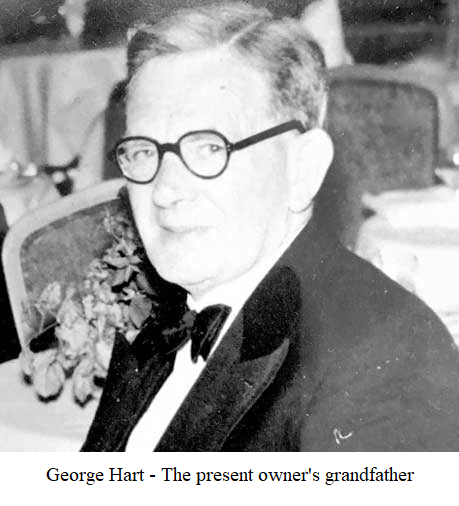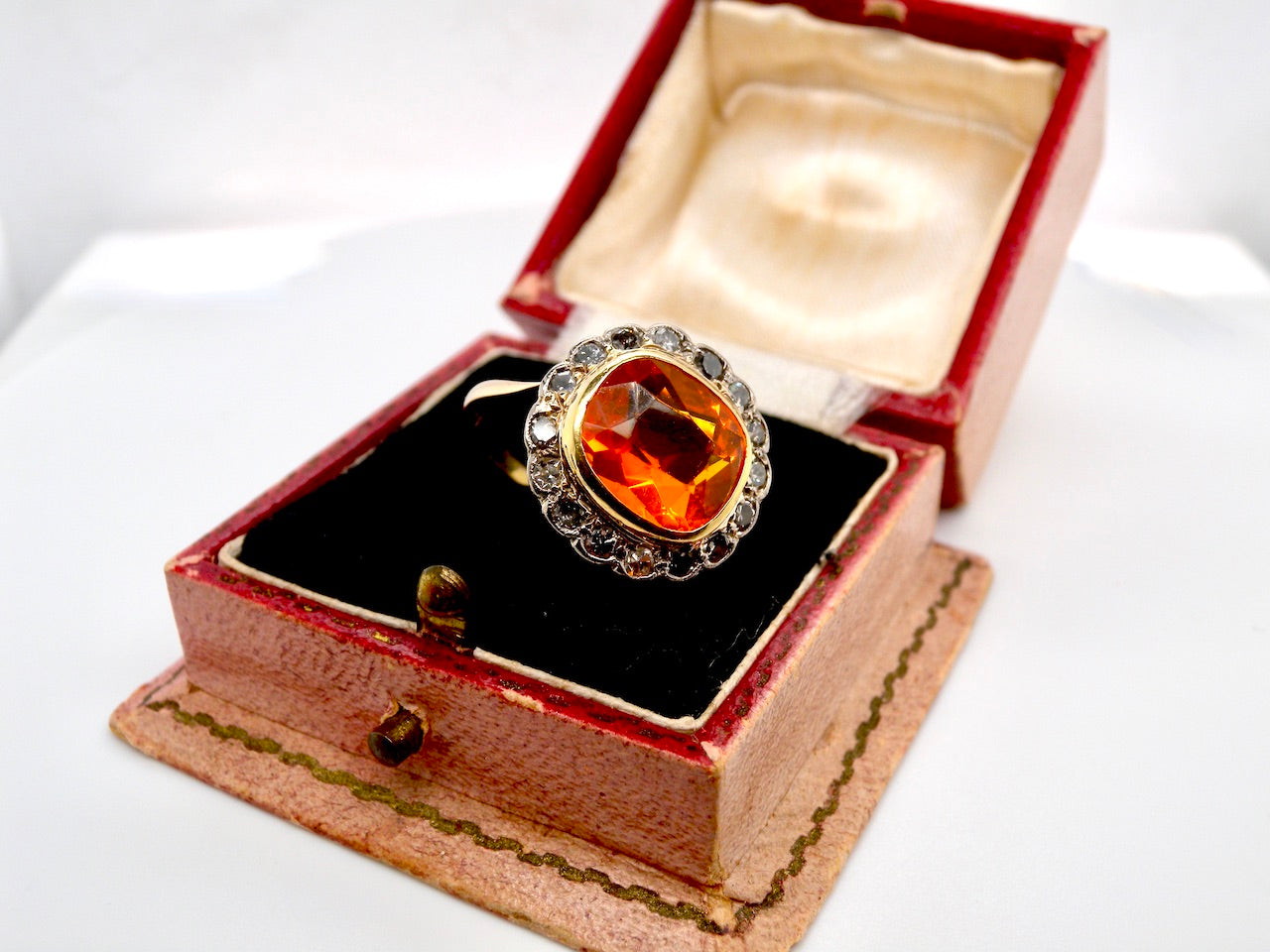The Heart of It: Sentiment and Story
If Georgian jewels are admired for their elegance, Victorian jewels are prized for their feeling. Queen Victoria’s own life shaped taste: the euphoric early years of her marriage inspired tender symbols and romance; Prince Albert’s death in 1861 ushered in decades of mourning fashion that coloured everything from materials to motifs. The result is a century of jewellery rich in meaning.
Hair Jewellery: Love Woven by Hand
What can feel unusual to modern eyes was, to Victorians, a cherished keepsake. Hairwork (sometimes called “hair jewellery”) used a loved one’s hair—braided, woven or intricately plaited—to create:
Lockets with hair under glass
Brooches with elaborate woven panels
Rings with hair inside a glazed compartment or braided into the band
Bracelets and watch chains made entirely of hair, finished with gold clasps
Not all hairwork is mourning-related many pieces mark friendship, courtship or marriage. The craftsmanship is astonishing: symmetrical braids, tiny palettes of curls, and micro-knotting that could only be achieved by specialists. Condition matters; genuine period hair should show fine, natural variation rather than uniform, machine-like braiding.

Symbolism You’ll See Again and Again
Ivy (I cling), Forget-me-not (remembrance), Anchor (hope), Hands (friendship), Snakes (eternity), Stars (guidance), Knots (unbreakable bond), Acorns & Oak (strength), Swallows (safe return).
Understanding this “visual vocabulary” turns browsing into reading—and is half the joy of collecting.
Dating & Authenticity: Quick Checks for Collectors
Stone Cuts & Setting Style Old mine/old European/rose-cut diamonds, cabochon garnets, closed or half-closed backs, silver-topped gold for diamond pieces.
Hallmarks & Clasps British hallmarks can indicate metal, town (e.g., London, Birmingham, Chester, Sheffield) and date letters. Clasps, hinges and pin fittings also help date brooches and lockets.
Condition, Not Over-Polish Soft edges are fine; excessive “like-new” shine on a 150-year-old jewel can be a red flag or suggest over-restoration.

-
Cameos: Carved pieces showcasing classical themes.

-
Bracelets: Frequently designed with multiple strands and clasps.

-
Rings: Both engagement and mourning rings were popular.

Victorian Vintage Jewellery: Timeless Elegance from the Past
There’s a special kind of romance in Victorian jewellery. Beyond the sparkle lies a language of love, memory, and meaning told through serpents and hearts, forget-me-nots and ivy, lockets and engraved vows. Crafted during a century of profound change, these pieces feel intimate and alive, as if they still carry whispers from their first wearers.
What Is Victorian Jewellery?
Victorian jewellery refers to pieces made during the reign of Queen Victoria (1837–1901). It spans an age of industrial progress, archaeological discovery, and personal sentiment and you can see all of it translated into design. Jewellers looked back to antiquity, celebrated nature, and found ever more refined ways to capture love and loss in gold and gemstones. For a broader museum view of how 19th-century design revived ancient styles, see the V&A’s overview of jewellery history.
Hallmarks of the Style
Victorian pieces are renowned for detailed workmanship, romantic symbolism, and storytelling motifs. You’ll frequently encounter:
Motifs: serpents (eternity), hearts and hands (love & friendship), anchors (hope), floral garlands, stars and crescents.
Gemstones: garnets, amethysts, opals, turquoise and seed pearls; later in the period, more diamonds appear.
Materials & techniques: gold (often with silver tops for diamonds), onyx and Whitby jet for mourning, enamel, cannetille (fine wirework), repoussé (raised metalwork), and closed or foiled backs that enhance colour.
The Three Victorian Periods (At a Glance)
Early / Romantic (1837–1860)
Light, sentimental designs: turquoise and seed pearls, floral language, hairwork lockets, acrostic rings spelling secret words (DEAREST, REGARDS, LOVE).
Mid / Grand (1861–1880)
After Prince Albert’s death, mourning jewellery flourishes. Expect jet and onyx, black enamel, bolder gold, and archaeological revivals (Etruscan, Egyptian, Renaissance aesthetics).
Late / Aesthetic (1880–1901)
A lighter touch returns: star-set diamonds, gypsy-set rings, Japanese influence, and naturalistic motifs; diamonds and colourful gems take centre stage again.
Types of Victorian Jewellery You’ll See (and Love)
Brooches & Lockets – Often with portraits, woven hair, or miniature keepsakes under crystal. The British Museum holds exquisite examples of hairwork and mourning pieces that show the fashion’s emotional depth.
Cameos – Classical profiles carved in shell or stone, framed in gold or enamel.
Bracelets – From multiple strands with ornate clasps to serpent coils around the wrist.
Rings – Everything from sentimental acrostics to bold cabochon garnet clusters; engagement and mourning rings were both deeply symbolic.
The Serpent, the Secret, and the Sentiment
Victorian jewellery is a conversation in symbols. A few favourites:
Snake motifs: After Prince Albert gifted Victoria a serpent engagement ring, snakes (often ouroboros, tail-biting) symbolised eternal love and fidelity and became hugely fashionable in rings, bangles, and brooches.
Acrostic jewellery: Gemstones arranged so their initials spell a word DEAREST (Diamond, Emerald, Amethyst, Ruby, Emerald, Sapphire, Topaz) or REGARDS (Ruby, Emerald, Garnet, Amethyst, Ruby, Diamond, Sapphire).
Hairwork: Beautifully braided or woven hair set under crystal, a tactile keepsake of affection, friendship, or mourning a practice documented in numerous museum collections.
British Museum
Is Victorian Jewellery Valuable?
In a word, yes when the piece has authenticity, condition, rarity, and good materials. Hand-finished settings, period stone cuts (old mine/European/rose), original fittings, and compelling provenance all contribute to value. Rings are especially sought after for daily wearability and their emotional pull a Victorian serpent or star-set diamond ring feels as modern as it is historic.
Real Victorian vs. Reproductions: Quick Checks
Stone cuts & backs: Look for old cuts, closed or foiled backs on some coloured stones, and silver-topped gold for early diamond work.
Fittings: C-clasps, tube hinges, early safety chains, and period pin assemblies help date brooches and lockets.
Handmade nuance: Crisp (but not laser-perfect) engraving; tiny irregularities that show the maker’s hand.
Hallmarks: British marks can indicate town, metal, and date, but many genuine pieces aren’t stamped especially small items or those altered over time.
Condition: Honest wear is expected; be cautious with pieces that look suspiciously “brand new” for their age.
Why Victorian Jewellery Commands High Prices
Rarity One-of-one designs and fragile techniques that survived 120–180 years.
Craftsmanship Techniques that modern mass production can’t easily replicate.
Materials High-karat gold, natural pearls, old-cut diamonds, richly coloured garnets and opals.
History & Sentiment You’re wearing a story: of courtship, family memory, or a moment in design history.
Buying with Confidence (Collector Tips)
Prioritise originality: Unaltered shanks, original clasps and hinges, period settings.
Ask for condition notes: Look for secure stones, sound hinges, and stable enamel.
Consider wearability: Lockets on modern chains, gypsy-set rings for everyday, jet earrings for feather-light drama.
Buy from specialists: Reputable dealers provide clear photos, accurate dating, and stand behind authenticity.
Victorian Rings: Symbols to Be Worn
Victorian rings weren’t mere accessories; they signalled status, commitment, and feeling. Engagement rings often paired diamonds with coloured stones, while mourning rings carried names, dates, or locks of hair. Many were treasured for generations and with care, they’re ready for their next chapter.
Frequently Asked Questions
How can you tell quality vintage jewellery?
Look for balanced design, crisp engraving, lively stones, proper weight for the metal, and secure settings. Hallmarks help, but workmanship and condition are key and a specialist opinion is worth its weight in gold.
How do I know if my vintage piece is valuable?
Age, rarity, condition, craftsmanship, and materials all matter. Provenance and inscriptions can add charm and value. A professional appraisal gives clarity.
What’s the difference between Victorian and Edwardian jewellery?
Victorian (1837–1901) leans sentimental and symbolic, with periods of bold mourning style; Edwardian (1901–1910) is airier and lace-like, often in platinum with fine diamonds and openwork.
Was Victorian jewellery stamped?
Sometimes but not always. Absence of a hallmark isn’t a deal-breaker if other period indicators are present.
Explore Authentic Victorian Pieces
At Vintage Tom, we curate Victorian jewellery for its story, craftsmanship, and condition from serpent rings and acrostic messages to jet lockets and glowing garnet cabochons. Each jewel is chosen to be worn and loved today while preserving the life it has already lived.
👉 Discover the collection: Victorian Jewellery at Vintage Tom
Further reading (authoritative sources)
-
V&A — A History of Jewellery (19th-century revivals and techniques).
-
British Museum — Hairwork & Mourning Jewellery (exhibition highlight; period examples).
You May Also Like: What is Estate Jewellery



